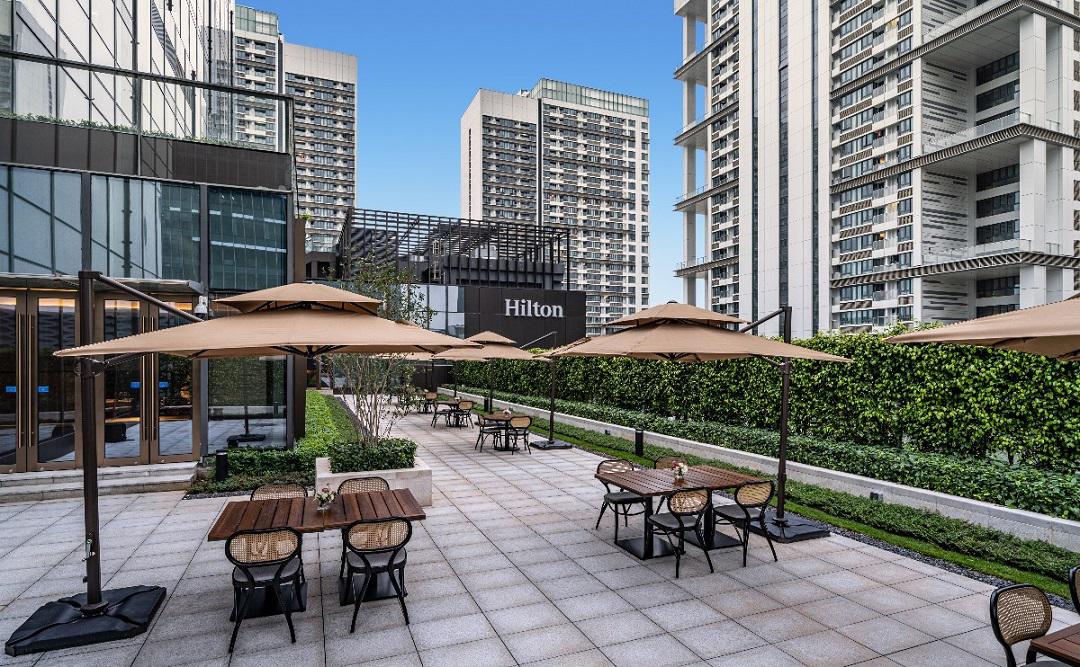How To Upgrade Chairs In Outdoor Restaurants?
In the catering industry, outdoor dining areas are gradually becoming an important part of improving customer satisfaction, enhancing brand image, and promoting business growth. As people's desire for outdoor lifestyles deepens, a comfortable, beautiful, and attractive outdoor seating area can not only extend customers' stay time, but also promote the shaping of brand image. Therefore, upgrading outdoor restaurant chairs is particularly important.

1、 Choose durable and comfortable materials
The outdoor environment is constantly changing, and factors such as rain, sunlight, and sandstorms have raised higher requirements for furniture materials. Therefore, choosing materials that are durable, corrosion-resistant, and easy to clean is the primary principle.
Metal material: Stainless steel or aluminum alloy chairs have become a common choice in outdoor restaurants due to their corrosion resistance, lightweight and sturdy characteristics. By spray painting or electrophoretic treatment, its rust prevention ability and aesthetics can be further increased.
Wood material: Select solid wood or synthetic wood (such as plastic wood) that has undergone special waterproof treatment, which can effectively resist harsh outdoor weather while maintaining its natural texture. However, regular inspections and application of protective oil are necessary to extend the service life.
Plastic material: High molecular weight polyethylene (HDPE) and other advanced plastic materials are suitable for making outdoor leisure chairs due to their strong weather resistance, rich colors, and easy cleaning. In addition, the reuse of recycled plastics is also in line with environmental trends.
Weaving material: rattan or synthetic fiber woven chairs, with good breathability, suitable for warm climates, but need to avoid prolonged exposure to sunlight and rain to avoid affecting structural strength.

2、 Design consideration: Balancing aesthetics and practicality
Chair design should not only be aesthetically pleasing, but also comply with ergonomic principles to ensure that sitting for long periods of time does not cause fatigue.
Ergonomic design: Choose chairs with backrests and armrests to provide better support and reduce pressure on the back and arms. The seat height should be moderate, with knees bent at a 90 degree angle and feet flat on the ground to maintain smooth blood circulation.
Style matching: The chair style should be coordinated with the overall decoration style of the restaurant, such as modern simplicity, pastoral style, industrial style, etc., to create a unified and harmonious visual effect. Considering seasonal changes, chairs with cushions or cushions can be provided in winter to increase warmth.
Flexible layout: Choose stackable or wheeled chairs for easy daily management and space adjustment, adapting to different passenger flow needs.

3、 Function optimization: Enhance dining experience
Adjustable function: Some high-end outdoor restaurants may consider introducing chairs with adjustable height and tilt angle to meet the physical needs and preferences of different customers.
Integrated lighting: LED lights are integrated on the armrests or backrests of chairs to add a warm atmosphere to nighttime dining, while ensuring sufficient lighting for easy reading of menus or communication.
Storage design: A small storage space is designed under the chair or inside the seat to facilitate customers in storing small items such as mobile phones and keys, enhancing convenience.

4、 Maintenance and upkeep: Extend service life
Regular cleaning: Choose appropriate cleaning agents and methods based on the material characteristics. For example, metal and plastic chairs can be wiped with a damp cloth, while wooden chairs need to be maintained with specialized wood wax oil.
Sunscreen and rainproof: In extreme weather conditions, use umbrellas or canopies to protect chairs and reduce direct exposure to harsh environments.
Regular inspection: Check the connectors, screws, etc. of the chair, tighten or replace damaged parts in a timely manner, and prevent safety hazards.
From the above points, we can see that upgrading chairs in outdoor restaurants is not simply about replacing old and new, but involves a series of thoughtful design decisions. From material selection to detailed decoration, to consideration of functionality and environmental adaptability, every detail reflects attention and respect for customer experience. The ultimate goal is to create an outdoor dining environment that not only attracts customers to stop, but also leaves unforgettable memories. In this process, restaurants not only enhance their competitiveness, but also contribute to community culture and residents' quality of life. Upgrading outdoor dining spaces is actually a pursuit and expression of a better life, which is worth every catering practitioner's effort to practice and innovate.




